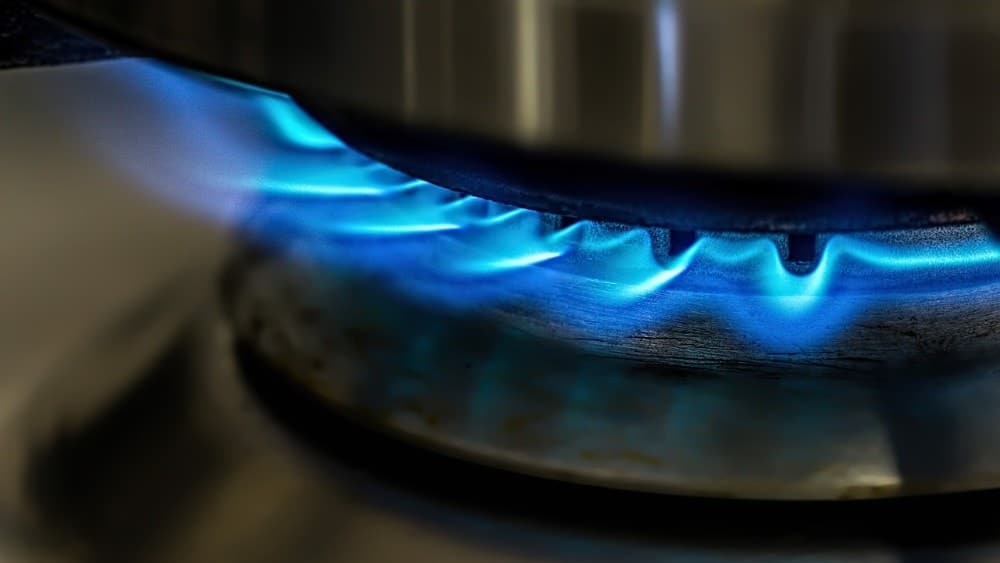Brewing your own beer can feel a bit daunting at first, but it doesn’t have to be! If you’re new to the world of homebrewing, a simple pale ale recipe is the perfect way to dive in. With just a few basic ingredients and easy-to-follow steps, you’ll be sipping on your very own creation in no time.
Understanding Pale Ale
Pale ale stands as a popular choice among homebrewers and craft beer enthusiasts. Its balanced flavors and approachable nature make it ideal for beginners.
What Is Pale Ale?
Pale ale is a style of beer known for its golden to amber color, deriving from pale malts. Originating in England during the 18th century, this beer type uses top-fermenting yeast, resulting in a slightly fruity taste profile. Common variations include American pale ale, which emphasizes hoppy bitterness and citrus notes, and English pale ale, known for its malt-forward flavors and earthy hop characteristics.
Characteristics of Simple Pale Ale
Simple pale ale exhibits several notable characteristics:

- Color: Ranges from golden to amber hues, signaling the use of pale malts.
- Alcohol Content: Typically falls between 4.5% and 6% ABV, appealing to a broad audience.
- Flavor Profile: Balances malt sweetness with hop bitterness, often featuring floral, citrus, or fruity notes.
- Aroma: Presents a mild hop aroma with hints of malt sweetness, enhancing the overall experience.
- Mouthfeel: Maintains a medium body with a smooth finish, making it easily drinkable.
These qualities not only create a refreshing beer but also make the brewing process approachable for novices.
Ingredients for Simple Pale Ale
Brewing a simple pale ale requires a few key ingredients that create a solid foundation for your beer. Let’s dive into both essential and optional ingredients for enhancing your brew.
Essential Ingredients
- Malted Barley: Use around 9-10 pounds of pale malt. This provides the primary fermentable sugars and contributes to the beer’s color and body.
- Hops: Select hops like Cascade or Centennial, totaling about 1 to 2 ounces. These hops impart bitterness and aroma and complement the malt profile.
- Yeast: Choose a clean-fermenting ale yeast, such as Safale US-05. You’ll need one packet to ferment your brew and create those delightful fruity esters.
- Water: Filtered water is crucial, generally about 5 gallons. Quality water enhances taste and reduces unwanted flavors.
Optional Ingredients for Flavor
- Specialty Malts: Consider adding up to 1 pound of specialty malts, such as Crystal or Munich, for additional sweetness and complexity.
- Adjuncts: Experiment with adding 0.5 to 1 pound of corn sugar or honey for subtle flavors and a boost in alcohol content.
- Dry Hops: For added aroma, add another ounce of hops during fermentation, which enhances that hop-forward character.
- Fruit or Spices: Incorporating ingredients like citrus zest or coriander can add interesting flavor notes, though moderation is key.
Brewing Equipment You Will Need
To brew a simple pale ale, you’ll need some essential equipment. This gear makes the brewing process smoother and more enjoyable.
Basic Equipment
- Brew Kettle: A large pot, typically 5-7 gallons, is necessary for boiling your ingredients.
- Fermenter: A fermenter, preferably a food-grade plastic bucket or glass carboy, keeps your beer safe during fermentation.
- Airlock: An airlock fits in the lid of your fermenter, allowing gases to escape while keeping contaminants out.
- Thermometer: A precise digital thermometer helps monitor temperature, ensuring yeast ferments at the ideal range.
- Hydrometer: A hydrometer measures specific gravity, which tells you the alcohol content after fermentation.
- Siphon: A siphon or racking cane allows you to transfer beer from the fermenter to bottles without disturbing sediment.
- Bottles and Caps: Clean, sanitized bottles and caps store your finished pale ale, preserving its freshness.
Optional Tools for Efficiency
- Grain Mill: A grain mill crushes grains to facilitate better extraction of sugars during mashing.
- Wort Chiller: A wort chiller speeds up the cooling process after boiling, reducing the risk of contamination.
- Kegging System: A kegging system offers convenience for storage and serving, providing a draft beer experience at home.
- pH Meter: A pH meter helps monitor the acidity of your wort, a factor that influences flavor and fermentation performance.
- Scale: A digital scale ensures accurate measurements for ingredients, which is vital for consistency in your brews.
- Cleaning Supplies: Cleaners and sanitizers like Star San keep your equipment free from contaminants, promoting a healthy fermentation environment.
Step-by-Step Brewing Process
Brewing your own pale ale is an enjoyable and straightforward process, perfect for beginners looking to dive into the world of homebrewing. Follow these steps to create a delicious batch.
Preparing the Ingredients
- Measure the malted barley: I recommend weighing out 9-10 pounds of malted barley. This grain provides fermentable sugars that are crucial for your beer.
- Select your hops: Choose 1 to 2 ounces of hops like Cascade or Centennial. These hops contribute bitterness and aroma that enhance the beer’s flavor.
- Gather water: Use approximately 5 gallons of filtered water. Quality water significantly affects the final taste of your pale ale.
- Prepare optional ingredients: For additional flavor complexity, I suggest measuring up to 1 pound of specialty malts, if desired. Note that adjuncts like corn sugar or honey can increase alcohol content but should be added in moderation.
Brewing the Beer
- Heat the water: Bring your 5 gallons of filtered water to around 160-170°F. This temperature helps extract sugars from the malt efficiently.
- Mash the grains: Add the malted barley to the hot water, maintaining the temperature for about 60 minutes. Stir occasionally to prevent clumping.
- Lauter and sparge: After mashing, separate the liquid wort from the grains. Use a strainer or bag to ensure you’re left with a clear liquid for boiling.
- Boil the wort: Bring the wort to a rolling boil. After the boil, add your hops according to your preferred bitterness level. Boil for 60 minutes, adding hops at different times for complexity.
Fermentation Process
- Cool the wort: After boiling, cool the wort rapidly to around 70°F. Using a wort chiller simplifies this process.
- Transfer to fermenter: Pour the cooled wort into a sanitized fermenter. Ensure you’re leaving behind any sediment from boiling.
- Add yeast: Sprinkle a packet of clean-fermenting ale yeast, such as Safale US-05, into the wort. This yeast robustly ferments and enhances flavors.
- Seal and store: Seal the fermenter with an airlock. Place it in a dark, temperature-controlled space, ideally between 65-75°F, for fermentation. Allow it to ferment for about 1-2 weeks, checking specific gravity regularly to monitor progress.
Tips for Success
Homebrewing can be a rewarding experience, especially when you follow some simple tips to ensure success in your pale ale brewing.
Common Mistakes to Avoid
- Skipping Sanitization: I can’t stress enough how important sanitation is. Bacteria can easily spoil your brew, so always sanitize everything.
- Using Too Much or Too Little Hops: I recommend measuring your hops carefully. Too much can overpower your beer; too little may leave it flat.
- Ignoring Temperature Control: I know it’s tempting, but don’t neglect fermentation temperatures. Yeast thrives within specific ranges. Follow the guidelines for your chosen yeast strain.
- Rushing the Fermentation Process: I’ve learned that patience is critical. Let your beer ferment for the full recommended period, typically 1-2 weeks, before bottling.
- Not Taking Gravity Readings: I always check the specific gravity at the start and end of fermentation. It helps ensure fermentation completes and gives me an accurate ABV.
Best Practices for Beginners
- Choose Simple Recipes: I suggest starting with uncomplicated recipes like a pale ale. It helps build confidence and skills.
- Maintain a Brewing Journal: I keep notes on each brew, including ingredients, processes, and outcomes. It’s invaluable for tracking progress and learning from mistakes.
- Invest in Quality Ingredients: I always opt for fresh, high-quality ingredients. It makes a noticeable difference in the final product.
- Follow Procedures Carefully: I adhere strictly to the steps outlined in the recipe. Precision during brewing translates to quality in the bottle.
- Engage with the Community: I find that sharing experiences with fellow brewers enhances my understanding. Join forums, attend local meetups, or participate in homebrew competitions.
Conclusion
Brewing your own pale ale is an exciting journey that anyone can embark on. With just a few ingredients and some patience you can create a refreshing beer that you can proudly share with friends and family.
Don’t be afraid to experiment with flavors and techniques as you grow more comfortable with the process. Each batch is a chance to learn and improve your skills.
I can’t wait to hear about your brewing adventures. So grab your ingredients and start crafting your very own pale ale. Cheers to your new hobby!




